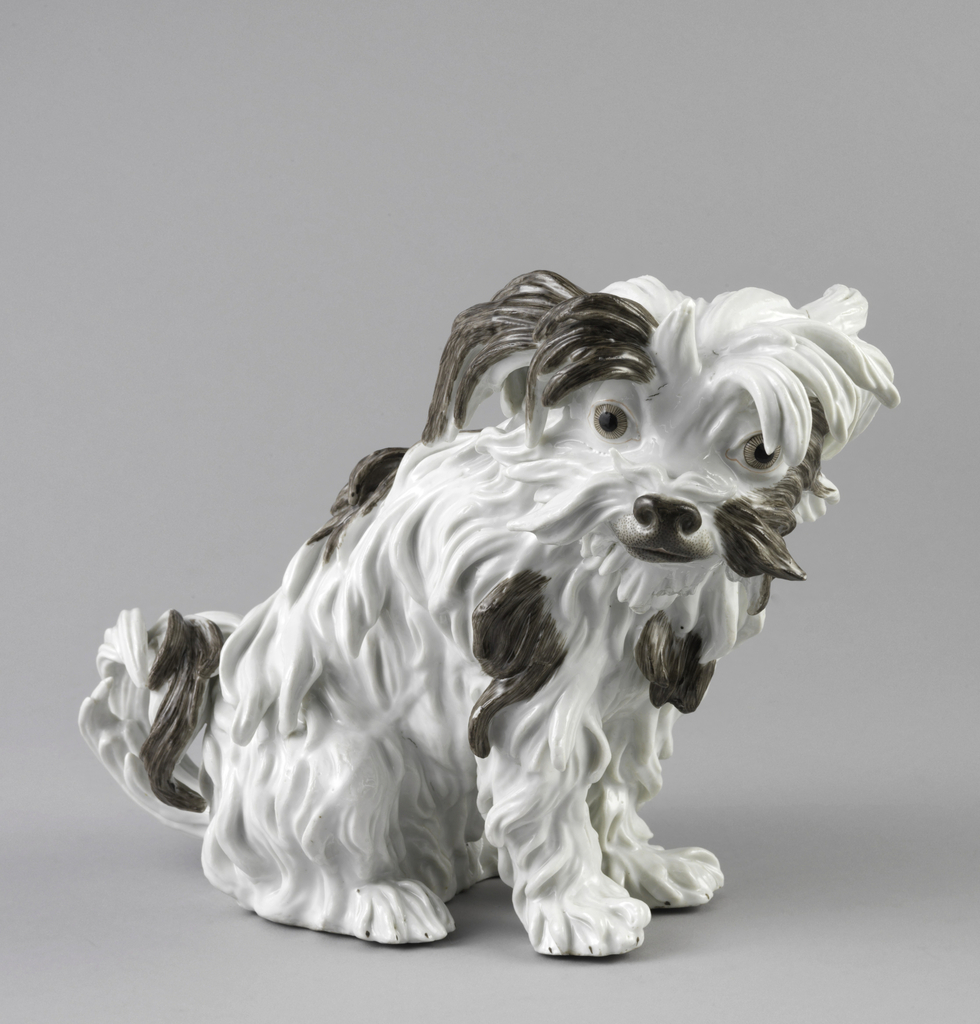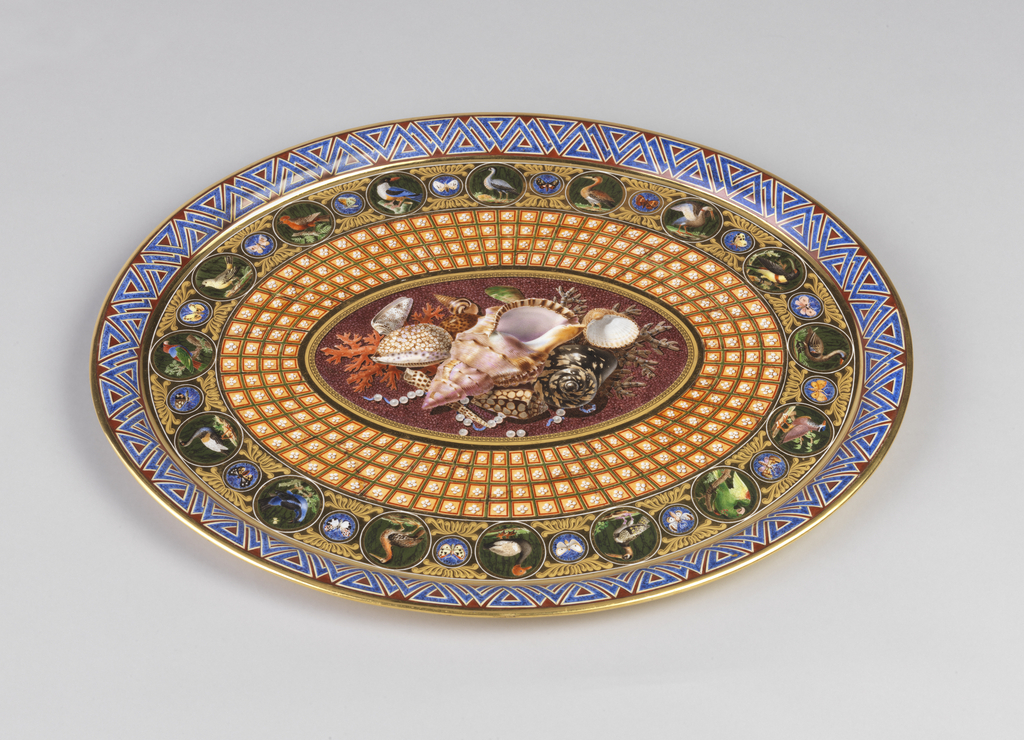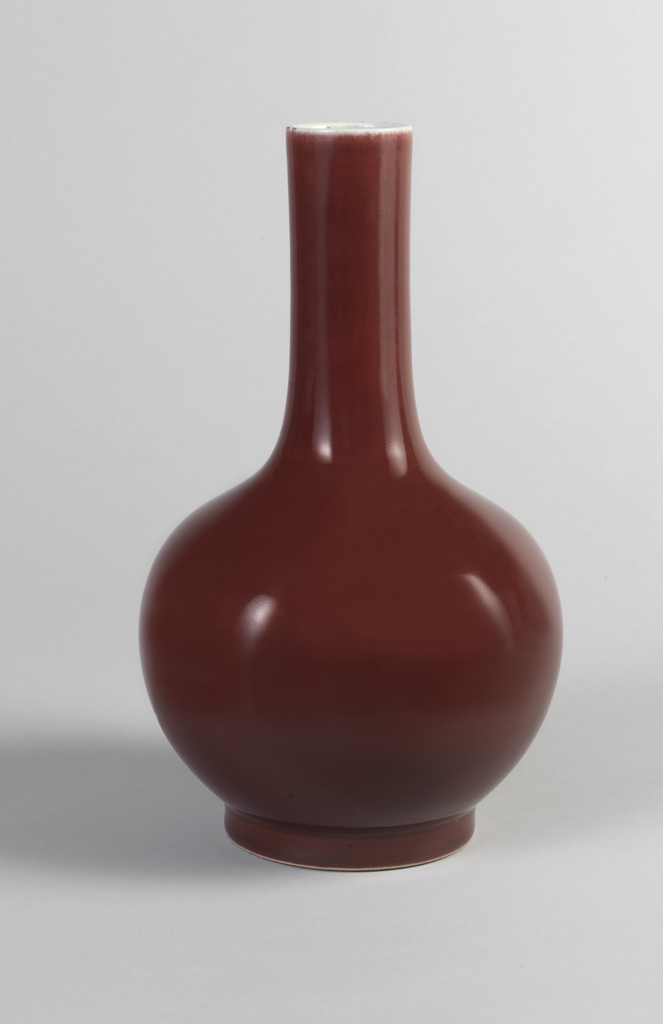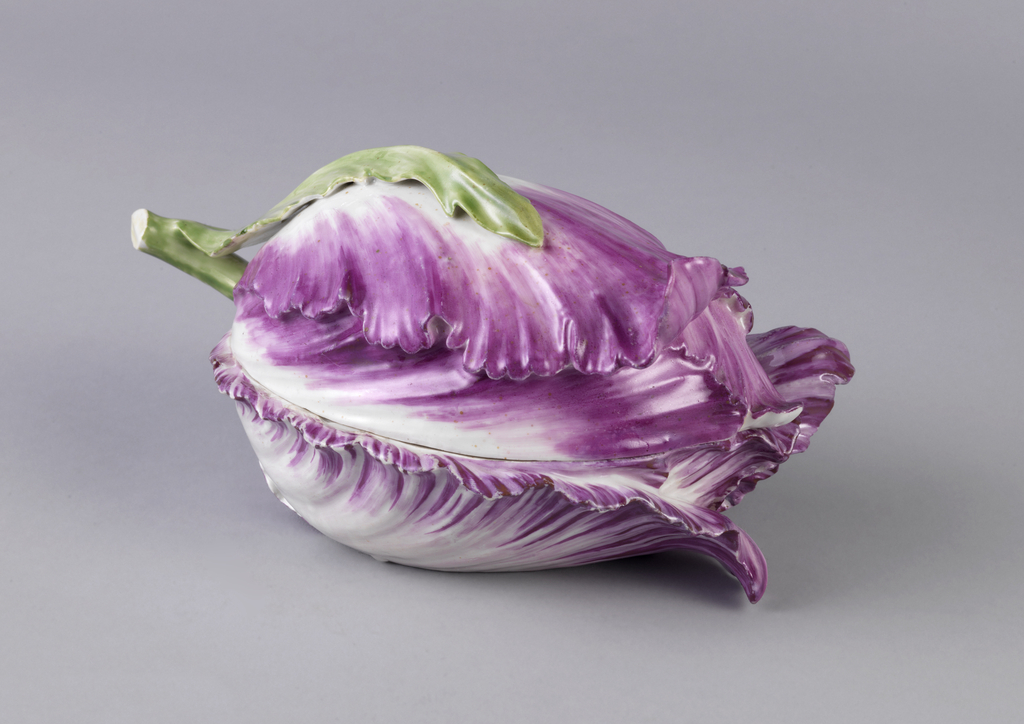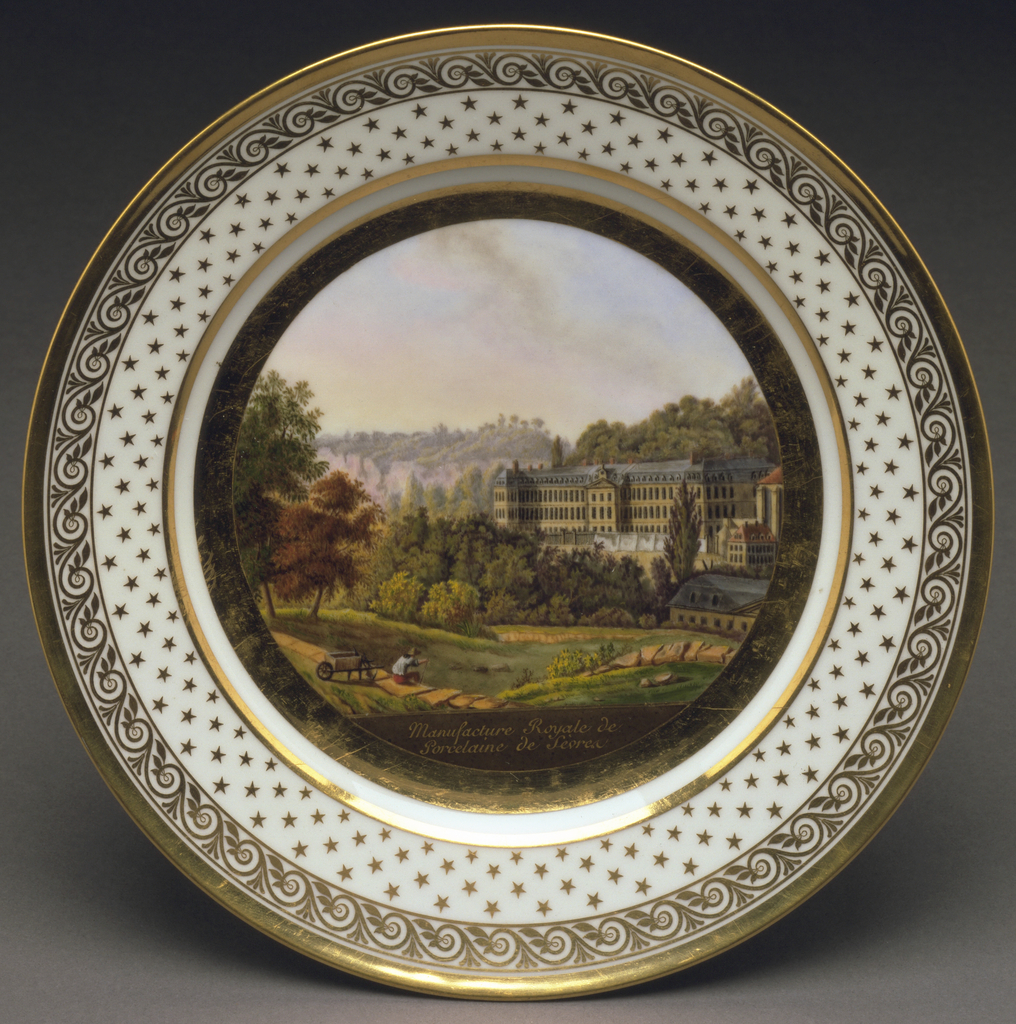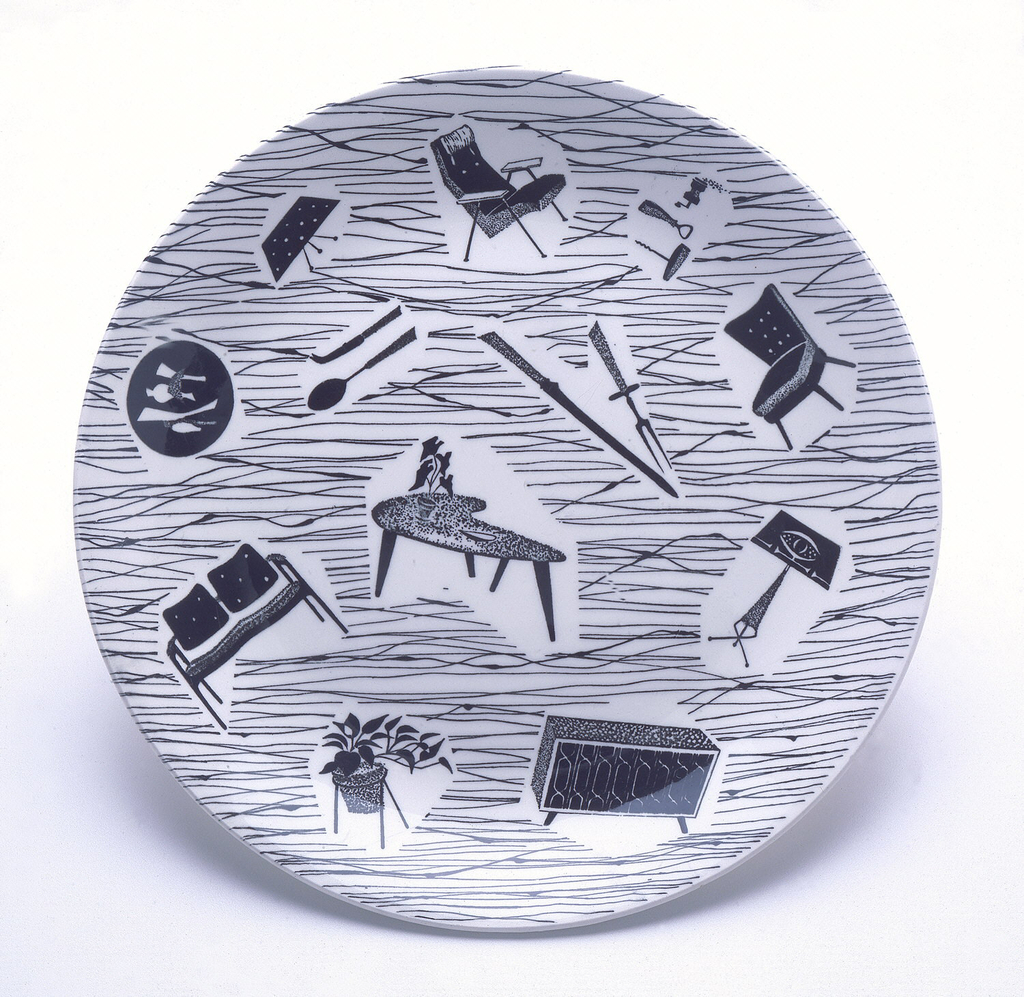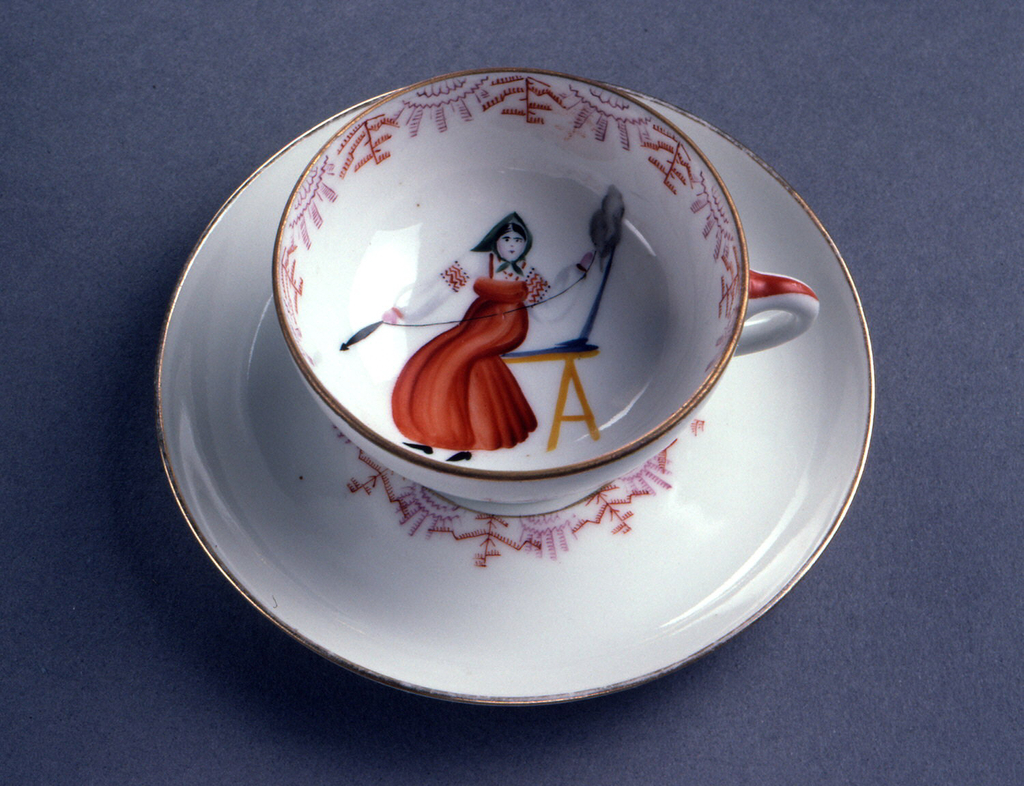When the Meissen porcelain manufactury began its operations in 1710, its focus was on producing fine dinner services and traditional functional decorative objects, such as vases. Meissen’s reputation and passion for the modeling of elaborate porcelain figures did not arise until two decades or so later, thanks to King Augustus of Saxony who, enthralled by...
This oval tray represents the unique collaborative effort between Alexandre Brongniart, the director of Sèvres appointed in 1800, and his father, the designer Alexandre-Théodore Brongniart. The younger Brongniart’s passion for the natural world is reflected by the scientific precision of the biological species represented in finely painted enamel. Small roundels of exotic birds and butterflies...
The deep red glaze on this porcelain vase is derived from copper, a metal which is notoriously difficult to control under the heat of a kiln. The distinct oxblood color is created when copper is starved of its oxygen during the firing (in a smoky, oxygen reduced kiln) and re-oxidized in the cooling. The resulting...
This tulip-form small tureen or covered dish must have appeared a wonderful bit of nature, as if fallen from a bouquet, on a dining table. Porcelain started to take the place of sugar sculptures on the most elegant tables of Europe in the eighteenth century. It came at a time when nature was being observed...
From the archives, an Object of the Day post on a Sèvres porcelain now on view in Tablescapes: Designs for Dining.
After World War II, design boomed in Europe. Colors were brighter, lines more dynamic and materials more industrial—affordable modernism emerged to feed thriving consumers in the 1950s. The now iconic Homemaker tableware line started as a challenge for young English designer Enid Seeney. She was tasked with creating an “all-over” pattern for fashionable rimless plates....
In 1918, amidst raging civil war and biting famine, Russia’s fledgling communist government was determined to communicate its values to a massive, largely illiterate and rural public. It found one of many vehicles in an equally massive propaganda campaign. The government mobilized artists from across Russia to create images in a vast array of media....
Annette Ahrens will give an overview and the historic lineage of Viennese tableware designs, production and design influences from 1850 to the present day. The talk will focus on the relationship of the Lobmeyr designs to design in Austria and Bohemia-Chekia and of the relationship of Czech production to Lobmeyr in both 19th and 20th...
